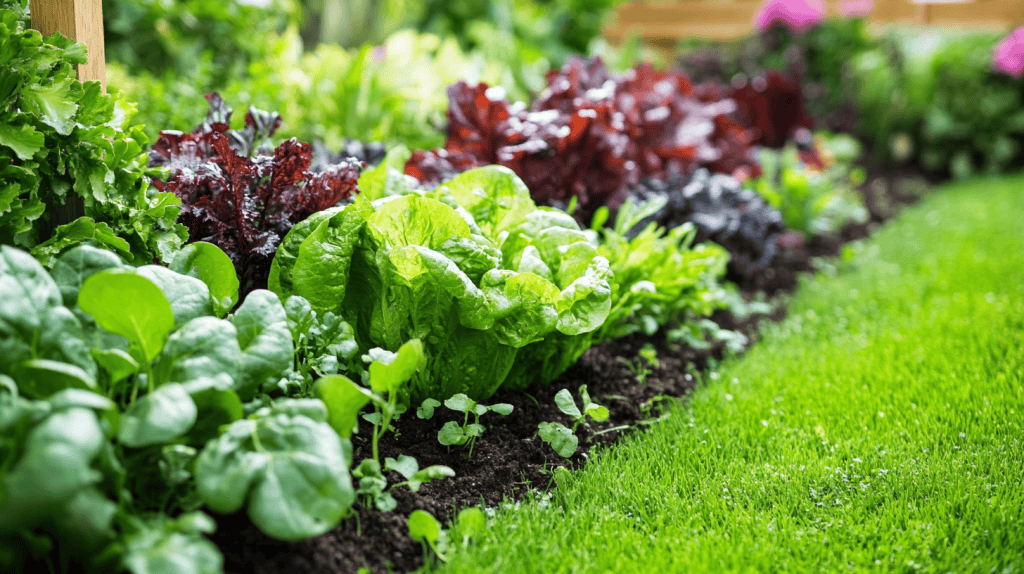10-10-10 fertilizer is an all-purpose solution for gardeners and weekend lawn warriors looking to provide balanced nutrition to their grass and plants. With equal parts nitrogen (N), phosphorus (P), and potassium (K), it is a popular option that can be used on various types of plants, lawns, trees, and crops. Understanding how using 10-10-10 fertilizer properly can help you maximize its benefits while avoiding potential issues like over-fertilization.
(If you make a purchase using the links in this post, we may earn a commission.)
What Does 10-10-10 Mean?
The numbers 10-10-10 represent the percentage of nitrogen, phosphorus, and potassium in the fertilizer. These are the three primary macronutrients that plants and grass need for healthy growth:
- Nitrogen (N): Promotes strong, leafy growth. This is especially important for grasses and leafy plants, as nitrogen is responsible for vibrant foliage and photosynthesis.
- Phosphorus (P): Encourages healthy root development and improves flowering and fruit production. This is crucial for plants that produce flowers or fruits, as well as for establishing new plants or lawns.
- Potassium (K): Enhances overall plant health, strengthening plants against disease and stress. Potassium also helps regulate water and nutrient uptake, making it essential for hardy, resilient plants.

The equal balance of these nutrients makes 10-10-10 fertilizer a great choice when you’re looking for a general-purpose fertilizer solution. However, it is not specialized, meaning it might not be the best option if your soil is already rich in one of these nutrients.
Pro Tip: Not sure what your lawn needs? Get a soil test!
BUY – MySoil Test Kit
When to Use 10-10-10 Fertilizer
To determine whether 10-10-10 fertilizer is right for your garden, it’s important to test your soil. A soil test will help you to know your soil’s deficiencies, which can guide you toward the best fertilizer for your needs. Over-fertilizing can harm plants, so it’s essential to apply it only when necessary. This balanced fertilizer is particularly useful in the following scenarios:
- New Lawns: When seeding a new lawn or overseeding an existing one, 10-10-10 fertilizer can support early growth if it’s specially designed for new grass. Its phosphorus content is particularly useful for root development, which is crucial for establishing strong, healthy grass.
- Vegetable Gardens: Vegetables, especially those that need strong roots and good flower production (like tomatoes or peppers), benefit from using 10-10-10 fertilizer. Using fertilizer at the beginning of the growing season can encourage healthy plant development.
- Flower Beds: If you have flower beds with a variety of plants, this all-purpose fertilizer can provide the nutrients needed for vibrant blooms and healthy roots.
- Fruit Trees and Shrubs: For fruit trees or shrubs, the phosphorus and potassium in using 10-10-10 fertilizer can help support fruit production, while nitrogen helps with overall plant growth.
How to Apply 10-10-10 Fertilizer
Once you’ve decided to use 10-10-10 fertilizer on your lawn or plants, the next step is to apply it properly. It comes in two common forms: granular and liquid. Here’s how to use both:
- Granular Form: This is the most common form of 10-10-10 fertilizer. Spread the granular prills evenly across the soil or around the base of plants using a hand or push spreader, then water it in to ensure the nutrients penetrate the soil and reach the roots. This method is often used for lawns and larger garden beds.
- Liquid Form: This type is dissolved in water and applied directly to plants. Liquid fertilizer is quickly absorbed by the soil and is ideal for potted plants, vegetable gardens, or when you need faster results.
Here’s what you’ll need:
Granular Form: BUY – Scotts Whirl Hand Spreader
Liquid Form: BUY – Petra 1 Gallon Pump Sprayer
Always follow the instructions on the fertilizer packaging. Applying too much fertilizer can damage your plants by causing nutrient imbalances, burning roots, or encouraging excessive leafy growth at the expense of flowers or fruits.
Best Practices for Fertilizer Application

- Timing Matters: Apply fertilizer at the right time of year. For lawns, early spring or fall is ideal, while garden plants often need fertilization at the beginning of the growing season.
- Watering: After applying granular fertilizer, water your plants thoroughly to help the nutrients reach the root zone. There is no need to water after applying 10-10-10 fertilizer in liquid form.
- Follow Soil Test Recommendations: Over-fertilizing can cause more harm than good. A soil test can prevent unnecessary nutrient application and ensure you’re giving your plants exactly what they need.
Potential Drawbacks
Although using 10-10-10 fertilizer is a versatile choice, it may not always be the best option for specialized needs. For example, if your soil is high in phosphorus but low in potassium, a fertilizer with a higher potassium concentration would be more effective. Over-reliance on a one-size-fits-all solution like 10-10-10 can lead to nutrient imbalances over time. That’s why it’s essential to use it as part of a broader, well-informed lawn/garden care strategy.
Using 10-10-10 Fertilizer Is A Good Choice
10-10-10 fertilizer is a balanced, all-purpose option that can provide essential nutrients to your plants. While it offers an equal mix of nitrogen, phosphorus, and potassium, its effectiveness depends on proper use and the specific needs of your soil. Always conduct a soil test before application and follow the product instructions carefully to ensure your plants thrive. Whether you’re establishing a new lawn, growing vegetables, or maintaining a flower bed, using 10-10-10 fertilizer can be a valuable tool in your lawn and gardening arsenal when used correctly.
Here’s a 10-10-10 fertilizer that we’d recommend:
BUY – The Andersons PGF 10-10-10 Fertilizer

